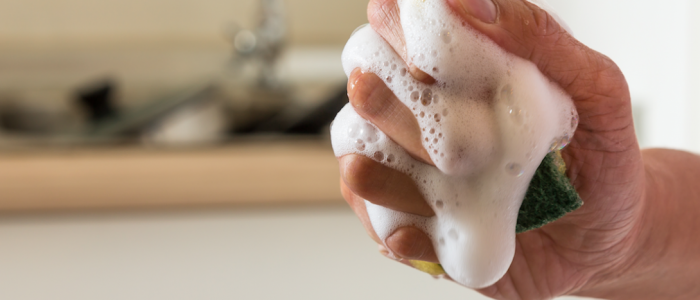When Too Much Insulin Sensitivity is Too Much
-Richard Maurer, ND // Twitter: @drrichardmaurer
“Too much of anything is bad, but too much good whiskey is barely enough.”
–Mark Twain
On a recent podcast, Robb Wolf and I continued a panel conversation we had started at PaleoFX15. The topic of insulin resistance (IR), we agree, is a little passé but as a writer and clinician, I stick to my guns and defend the valuable description. IR and her alter ego insulin sensitivity allow us to effectively qualify metabolic health and performance. Simply put, the more insulin sensitive you are, the healthier you are. But really?
Definitions first: Insulin resistance is narrowly defined in conventional medical lexicon as elevated fasting blood sugar (glucose). Yet on it’s own, this test does not indicate insulin resistance—exercise, coffee, anxiety, and a host of medications can all elevate fasting blood glucose. In The Blood Code: Unlock the secrets of your metabolism, I define Insulin resistance:
“Insulin is the primary hormone that responds to what you eat. You release insulin when you eat carbohydrates and—to a lesser degree—protein. Insulin signals for the storage of sugars, and the making and stockpiling of fats; it also helps your cells uptake proteins and magnesium. Over many generations, your body has evolved to favor the ability to build and store a little extra, by leaving extra glucose behind in the bloodstream, and by storing extra fats for future energy needs. Over 40 percent of people in the United States—more than have blue eyes—store so much extra fat and glucose that it causes high blood pressure, high blood sugar, weight gain, and abnormal blood lipids. This constellation of symptoms is driven by the process of insulin resistance.”
To avoid the conditions listed above, you are better served by having insulin sensitivity—which I define more briefly as:
“Your body’s ability to utilize and clear glucose from the blood stream swiftly and efficiently without excessive insulin.”
In my lifestyle, with a strong family history of type 2 diabetes, I work to stay in the insulin sensitive side of the continuum. I maintain a low-carb high-fat diet and exercise regularly with strenuous circuits and high-intensity interval workouts. I feel good—in fact, I feel my best ever. But is it possible that too much of a good thing is too much? What happens if insulin levels go too low or stay low for too long?
Insulin sensitivity, if taken to the extreme, can lower fasting insulin levels to below detectable limits (<2uIU/mL). This is a well-established, decades-old finding in honed athletes. But at what cost is this low insulin state? When insulin is too low, your body does not get the strong message to replenish fat and glycogen. While this helps maintain ripped looking abs, low insulin limits glycogen replenishment that could help prepare you for the next sustained aerobic exertion. And while high insulin prevents fat catabolism (the breakdown of fat tissue for energy), a very low insulin allows for such quick fat catabolism, that adequate body fat is hard to maintain. It’s like your muscles are sponges, a good sponge should hold water (glucose) until it is squeezed—a sponge that doesn’t have enough holding power will release the water (glucose, glycogen and fat stores) too readily. These same leaky sponges do not absorb and replenish the water as well over time. I have seen the case many times— a thin marathon runner with high fasting blood glucose. Their doctors erroneously diagnose insulin resistance (aka, like the thin diabetic) but the real story is that they are TOO insulin sensitive complicated with low relative muscle mass. The leaky muscles phenomenon come with other problems too, like recurrent injuries and lagging performance. So how do we keep our muscles and performance like an optimally performing set of sponges?
I have found two tests that effectively assess when insulin sensitivity has gone too far. One is fasting insulin—if below detectable limits [<2 uIU/mL (<12 pmol/L)], you may be moving toward excessive insulin sensitivity [Of course, if you have low insulin and very high blood sugar you should be evaluated by someone familiar with late onset diabetes – LADA.] The other test is the TG:HDL ratio (in mg/dl: TG:HDL calculator is here: https://thebloodcode.com/calculators/). Your TG:HDL goal is 0.5-1.5, and most athletes shoot for the lower range of 0.5-1.0. Below 0.5, and you have too few fats circulating to provide adequate fat-derived energy. These tests are simple and inexpensive and direct labs offer a great service to get the tests—I link to ULTA labs at TheBloodCode.com.
It takes effort—lower carb and strenuous exercise–to prevent insulin resistance. But, beware if you find yourself too insulin sensitive, consider cycling higher carbohydrate foods into your daily or weekly routine. Post workout meals may need sweet potatoes or rice—any complex but easy to digest carbohydrate to temporarily push inulin levels up for a few hours. Higher protein too, especially at a meal that follows a hard workout, can help stimulate insulin.
And as for Mark Twain’s advice, I don’t know about the good whiskey, but too much of anything else? Yeah, it’s too much.




Comments are closed.